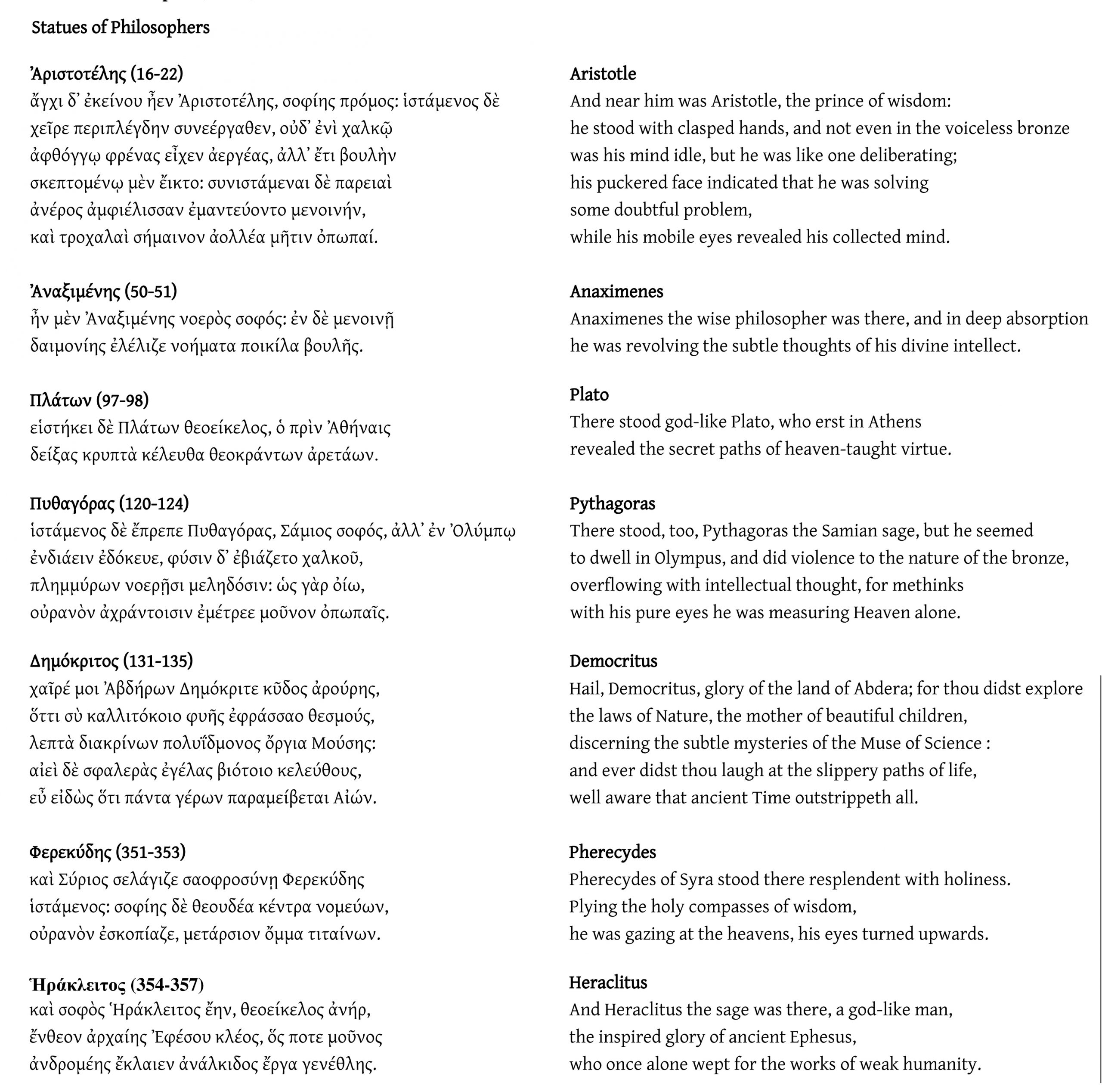Christodoros of Coptos
(fl. 495)
The long poetic description of the statues in the gymnasium of Zeuxippus, in Constantinople, cited in the Greek Anthology, is attributed to a poet named Christodorus. As his name indicates, he probably belonged to a generation of newly converted Christians. He appears to have had a strong pagan education, judging by the nature of a lost work attributed to him, a collection of memorabilia from the School of Proclus. His ekphrasis of the statues can be compared with Porphyry’s views on allegory and reads like a phenomenology of Neoplatonic art on account of its truly remarkable use of philosophical vocabulary (cf. in general the introduction of Tissoni 2000).
The statues of inspired philosophers and wise men (noeroi sophoi) look to the sky in deep meditation and seem to be alive. There are abundant metaphors of artistic representation evocative of Plotinian aesthetics. Unlike the traditional Greek ekphrasis of works of art that praises artists, Christodorus ‘tends to give hints of what the statues that are being represented might be thinking, feeling, and saying’ (Kaldellis 2007). Especially interesting is the typology of inspired and divine poets described in such as way as to recall Proclus’s view of poetry as a form of superior knowledge. The statues of Hesiod, for example, or of Homer, are portrayed in semi-divine terms. But the description of statues of philosophers is, perhaps, the best instance of this kind of Neoplatonic-inspired poetry.

For searchable text page – click here
Source
W.R. Paton (1917), The Greek Anthology, Volume 2: Books 7-8 (Cambridge MA, Harvard University Press).
References
Tissoni, F., (2000), Cristodoro. Un’introduzione e un commento (Alessandria, Edizioni dell’Orso.
Kaldellis A. (2007), ‘Christodorus on the Statues of the Zeuxippos Baths: A New Reading of the Ekphrasis’, Greek Roman and Byzantine Studies 47, 361-383.